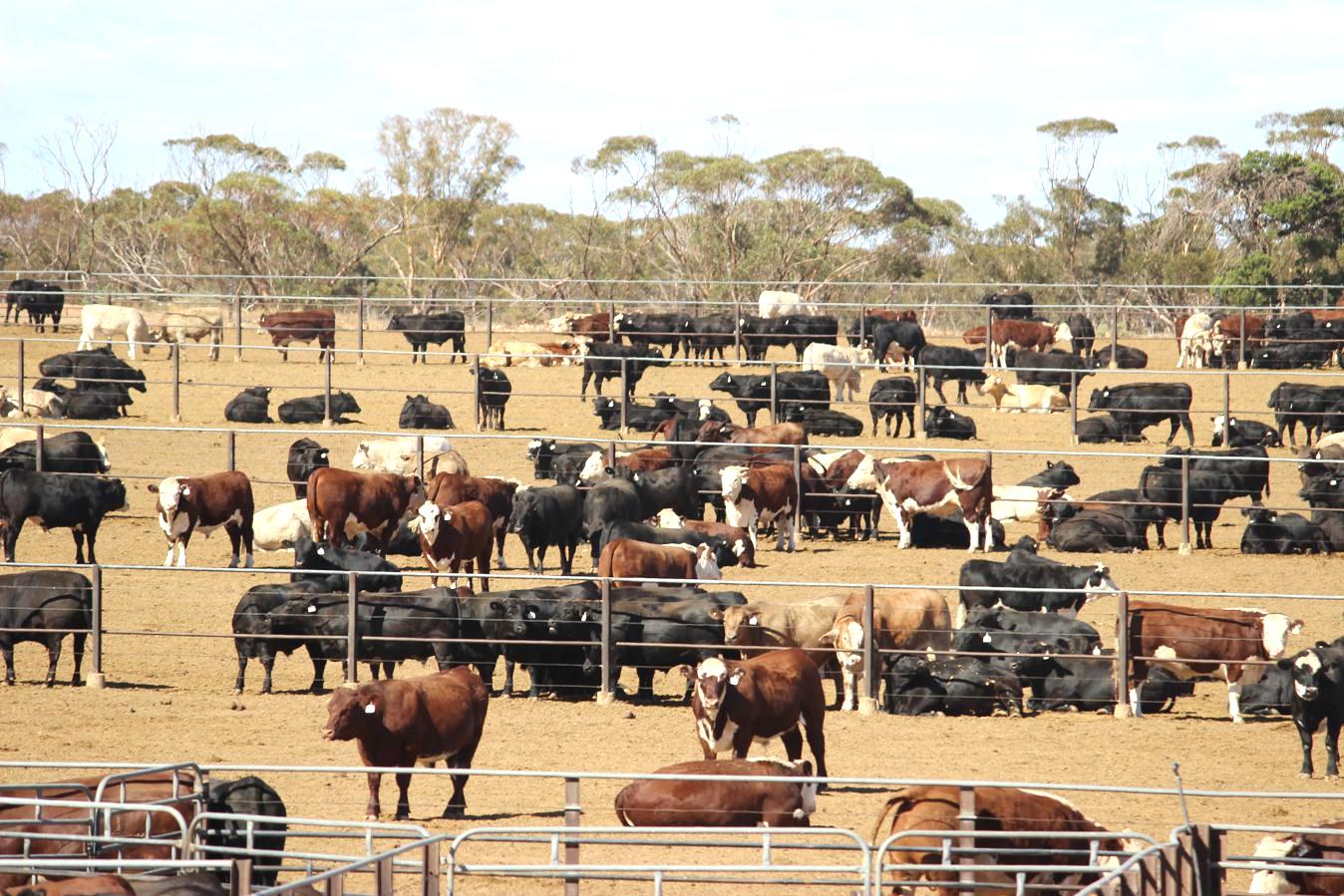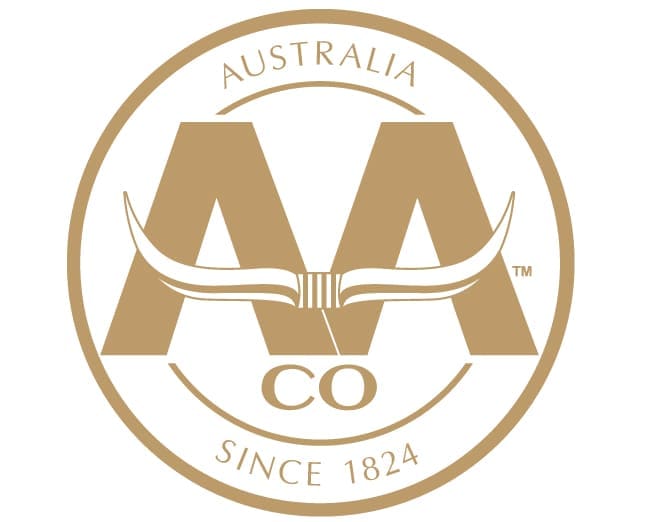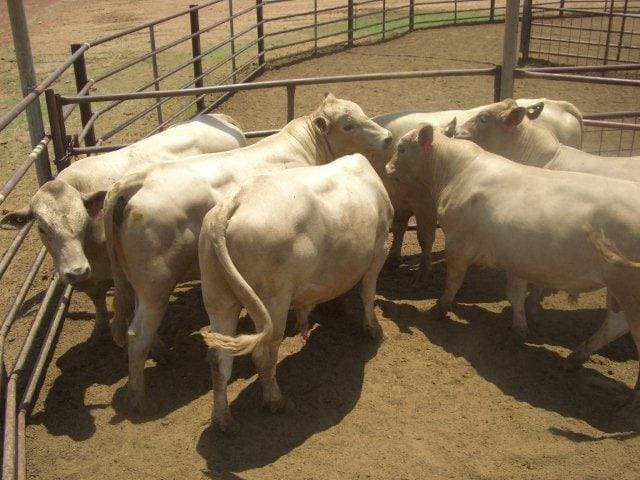
IN LAST week’s genetics review, the implementation of a complex composite breeding program in the early 1980s by the North Australian Pastoral Co was featured. Click here to view last week’s item.
Other large northern pastoral companies including the Australian Agricultural Co, Consolidated Pastoral Co and S. Kidman & Co, followed into their own composite breeding and crossbreeding programs over the past 30 years.
These companies generally run 14 to 20 large stations in northern Australia ranging from the environmentally challenging Kimberley and Gulf country to the more benign Barkly Tablelands and northern Queensland regions.
Their herds were traditionally based on high content Brahman cattle in the Kimberley and Gulf regions, and in the case of AA Co and Kidmans large Santa Gertrudis herds in the less environmentally challenging Barkly Tablelands in the Northern Territory and Channel Country in western Queensland and across the border into South Australia.
In the drive for higher fertility, more weightgain for earlier turn off and more recently better meat quality to satisfy domestic and export markets, all of these companies developed one or more composite breeding programs.
In general a higher Bos Indicus content was maintained for the tougher environments, while in the better environments, the composite bull breeding herds had zero to moderate Indicus content.
More recently the Wagyu breed has been widely used in crossbreeding programs especially in the softer, tick-free environments like the Barkly Tableland, especially to supply branded Wagyu products. Wagyu, both red and black, have proved to be surprisingly hardy in the north given their background of a high nutrition environment in Japan.
Australian Agricultural Co
 The Australian Agricultural Co developed a tropical composite breeding program in the early/mid 1990s under the guidance of well-known genetics consultant, Don Nicol.
The Australian Agricultural Co developed a tropical composite breeding program in the early/mid 1990s under the guidance of well-known genetics consultant, Don Nicol.
The two AA Co composites incorporated the Senepol breed, which had not been seen in Australia until it was introduced by AA Co specifically to introduce the ‘slick coat’ gene which the Senepol and a couple of other tropically-adapted Taurus breeds from the Caribbean and surrounding zones carry at a high frequency.
The company imported Senepol embryos from St Croix and the US to develop a herd here which they subsequently sold down once they had enough genetics for the composite development.
A tropically-adapted Taurus breed, Senepol evolved on St Croix island in the Caribbean by crossing the N’Dama a native (Bos Taurus) breed from Senegal ,North West Africa with the British Red Poll breed and then selecting the stabilised cross for heat resistance and tick resistance over 100 years.
More recent genomic analysis of the Senepol questions the amount of N’Dama in the breed, suggesting that much of the adapted genes in the Senepol derive from the Creole cattle that developed in Hispaniola, survivors from the cattle brought there by the Spanish conquistadors.
As an adapted taurine breed, it provided improved fertility and meat quality as well as hybrid vigour when crossed with Bos Indicus breeds such as the traditional AA Co Brahman and Santa Gertrudis herds.
“One copy of the ‘slick coat’ gene in an animal confers similar heat resistance to that of the Brahman breed and tick resistance similar to that of the Droughtmaster,” Don Nicol said.
However as well as fertility and meat quality, the resulting composite had to have sufficient adaptation for AA Co’s northern herds.
The AA Co Gulf composite, internally called the ‘Super Beefex’ was a four breed-composite after the initial crosses, ending up with 50 percent Senepol, 25pc Brahman, 12.5pc Charolais and 12.5pc Red Angus .
“Hybrid vigour is retained in a composite breeding program proportional to the number of breeds involved and the proportions of those breeds in advanced generations,” Mr Nicol said.
“The goal was to increase the weaning rate and eating quality of the northern herd utilising complementarity of the required traits from different breeds, as well as retaining a high level of hybrid vigour and adaptive traits. MSA grading was an early target of the breeding program,” he said.
A second ‘Barkly’ composite was developed by AA Co by using contract-bred Charolais X Senepol bulls developed by embryo transfer over the AA Co Santa Gertrudis cows run in the softer Barkly Tablelands properties.
Again the goal was to increase fertility and eating quality of the progeny by utilising complementarity and hybrid vigour.
In recent years the Wagyu breed has begun to play a major role in the AA Co breeding program with the purchase of the renowned Westholme Japanese Black Wagyu stud in the early 2000’s now claimed to be the largest Wagyu herd in Australia.
This stud has produced large numbers of Wagyu bulls for use in the AA Co herd with some 65,000 females joined to Wagyu as terminal sires in recent years.
More recently AA Co introduced some Red Wagyu bulls into its Barkly Tablelands composite herds to lift fertility and meat quality. The then chief operations officer at AA Co, Troy Setter, told the 2013 National Wagyu Conference that Red Wagyu were chosen over Black Wagyu because of their better muscling and frame score, while retaining high fertility and carcase traits.
As part of the red composite program, AA Co supplied Red Wagyu semen to a highly recorded red Brahman herd to produce the Wagyu X Brahman bulls that found their way into the AA Co composite program, Mr Setter said.
S. Kidman & Co
 New owners of the Kidman Pastoral Company, Gina Rinehart and her Chinese partners have made a significant investment into Wagyu genetics buying several well established Wagyu herds based in NSW.
New owners of the Kidman Pastoral Company, Gina Rinehart and her Chinese partners have made a significant investment into Wagyu genetics buying several well established Wagyu herds based in NSW.
It was not known if the Wagyu program will be used to supply pure Wagyu brands of beef or will be used to introduce Wagyu genetics into the existing Kidman northern herds.
Kidman started a composite breeding program in the early 2000s with the aim of increasing the fertility and meat quality of its northern Brahman and Charbray herds running on Helen Springs and Brunchilly west of Tennant Creek in NT, and Ruby Plains and Sturt Creek south of Halls Creek in WA.
The company chose to combine four breeds in the ‘Coolibah’ composite, with 25pc each of Tuli, Murray Grey, Charolais and Brahman. The name Coolibah was based on the creamy to grey colour of the Coolibah tree.

Composite bulls being used by S Kidman
Murray Grey was selected as the preferred British breed because they are polled and their coat colour provides greater heat tolerance than Black Angus.
The Tuli breed is a tropically adapted Bos Taurus breed introduced from Africa by CSIRO, which also has a creamy coloured coat.
While tick resistance was not a requirement, the Brahman was used for its hardiness and Charolais for its growth and carcase yield while retaining a similar coat colour.
The Charolais and Brahman content was introduced by contract breeding of polled French Charolais crossed with Brahmans to produce first cross Charbray bulls with as much polledness as possible.
Kidman’s goal was to increase carcase weights by 10 percent and branding rate by seven percent compared to the existing Brahman and Charbray cattle due to the combination of the desirable traits from each breed and retained hybrid vigour.
A purebred Tuli herd was established at Morney Plains at Windorah, Qld and a purebred Murray Grey herd established at Keith, SA as the source of Tuli and Murray Grey genetics.
In 2013 Kidman purchased the 14,600 Rockybank aggregation near Roma, Qld to enable the company to consolidate its Santa Gertrudis and Coolibah composite bull breeding programs while maintaining the Tuli herd at Windorah, Qld and the Murray Grey herd at Keith, SA.

Thanks for the excellent article and sharing this information
We have in Uruguay Black and Red Wagyu, and we are looking for use the red ones for tropical countries. What it`s the marbling performance on the Red Wagyu crosses in AACo?
Hi Mr George
I’ve been working in Brazil with crossbreeding in beef cattle for at least 30 years where having a large experience with Senepol Cattle and Don Nicol is completely right about the heat tolerance of this breed in tropical climates.
I just have one note about the tick resistency of this breed…some of the pure breeds take a lot ticks whike the most animal get free of ticks.
When Dr Frish (CSIRO) has been here in 2002 to introduce Senepol breed for our livestock throug crossbreeding Frish Sistem ( a 4 breeds rotacional crossbreeding) he said Senepol wouldn t take ticks….but it did not occured in every Senepol crossbreed herd.
Other important detail about the Senepol Breed is that nor all linages of the breed has slick hair gene.
If you need more results with tge breed and other crossbreedings contact me.
Or in my blog there is many resukts of crossbreedings….www.crossbreeding.com.br
16.98181.5753
Don forgot to mention the lower body temperature of nearly half a degree that also aids the Senepols heat tolerance. Again researched by Olsen at Uni of Florida
I should have also mentioned the growing literature on Senepol tick resistance from Brazil where the breed has grown in popularity in the last couple of decades. Authors such as Ibelli et al (2011),Mello de Alencar et al 2008.The island where the breed was developed has cattle tick endemic.
Hi George, Check out “Evidence of major gene influencing hair length and heat tolerance in Bos Taurus cattle” Olson et al. J.Anim.Sci Vol 81 Issue 1 1 January 2003 PP 80-90. There is a wide range of papers around this gene that has been introgressed into various dairy breeds to boost tropical adaptation. My comment on tick resistance was derived from natural field counts of various crossbreds in CQ (unpublished internal data).
It would be interesting to see the evidence for the claims made by Alex McDonald and Don Nicol about some of the traits of the parent breeds of these commercial Composites eg. tick resistance, heat tolerance of the Senepol. Don and Alex are professional Scientist and have some duty to substantiate their claims with facts.
The managers of the Pastoral Co’s are at liberty to make their commercial decisions and express opinions which are not necessarily based on facts. Scientist are expected to deal with facts and not opinions.